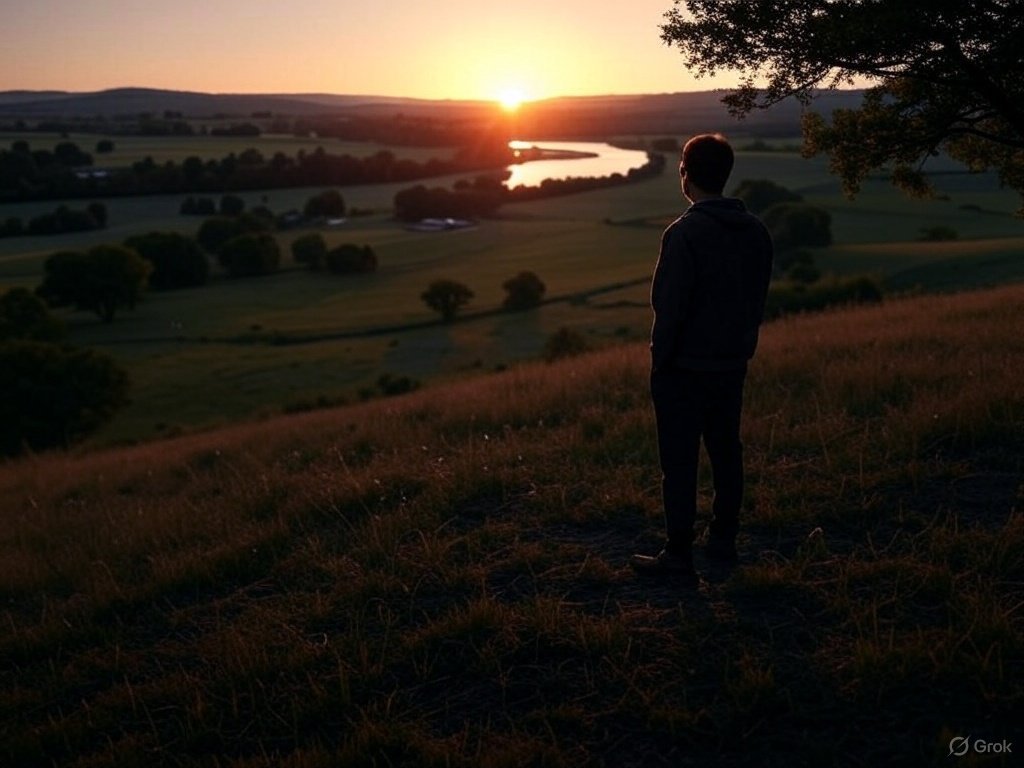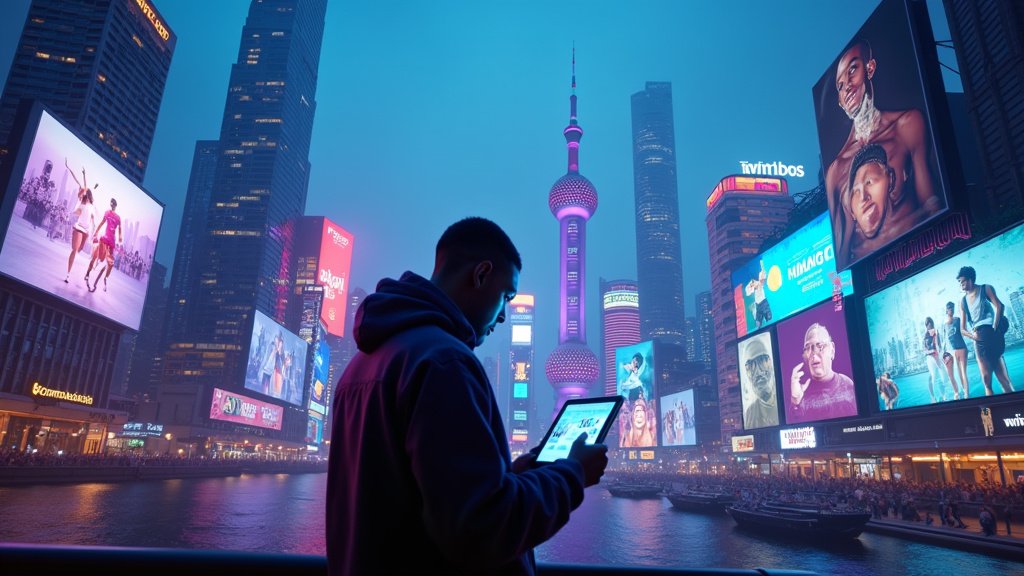Imagine slipping on a VR headset and instantly finding yourself standing at ground zero of a historic protest, the roar of thousands in your ears, placards rippling in the virtual breeze around you. Or perhaps you’re beneath the Arctic icepack, witnessing the slow retreat of glaciers, the cracking groans reverberating through your chest. Cinematic virtual-reality (VR) documentaries are redefining nonfiction storytelling by placing viewers not just “in front” of events, but “inside” them—transforming passive spectators into active witnesses. In 2025, as headset adoption climbs past 25 percent of households in key markets, VR documentaries have matured from experimental art projects into powerful tools for journalism, education, and empathy-driven advocacy. Here’s how creators are harnessing VR’s immersive potential, the technological breakthroughs enabling these experiences, and why VR documentaries are the new frontier of truth-telling.
1. The Promise of Presence: Why VR Changes the Documentary Game
Traditional documentaries rely on 2D visuals and voice-over to inform and inspire viewers. VR documentaries add a third dimension: presence. By simulating spatial audio and 360° environments, VR places viewers in a three-dimensional narrative space, provoking empathetic responses that linear films struggle to evoke.
- Empathy Through Embodiment: Studies at Stanford’s Virtual Human Interaction Lab show that embodiment in a VR scenario—feeling “present” in a refugee camp or a wildfire zone—can increase prosocial attitudes by up to 30 percent compared to watching a flat screen documentary.
- Active Exploration: Unlike passive viewing, VR lets audiences choose where to look, fostering a sense of agency. In Inside the Amazon (2024), viewers could pivot toward logging operations, wildlife habitats, or indigenous communities—each viewpoint unlocking unique narrative threads.
- Memory and Retention: Educational research indicates that VR experiences lead to higher retention of information—critical for documentaries with a call-to-action, whether climate policy or human-rights advocacy.
2. Technical Breakthroughs Powering VR Docs
Several technological advances have converged to make cinematic VR documentaries both feasible and compelling in 2025:
High-Resolution 360° Cinematography
- Multi-Lens Rigs: Companies like Insta360 Titan and Pixvana produce 11K rigs capable of capturing ultra-high-definition 360° footage. This clarity is essential when viewers can look anywhere; low resolution would break immersion.
- Stitching Algorithms: AI-driven stitching software now seamlessly merges footage from dozens of lenses, eliminating ghosting and mismatched seams that once plagued early VR films.
Spatial Audio and Ambisonics
- Object-Based Sound: Modern VR docs use ambisonic recording—capturing sound in six or more channels—so audio objects (e.g., voices, wildlife calls, machinery) stay anchored to their virtual positions as viewers look around.
- Dynamic Mixing Engines: Tools like Facebook’s Resonance Audio allow real-time audio occlusion and reverberation, adapting sound based on virtual environment changes—walking into a cave or open field.
Lightweight Headsets and Untethered Playback
- Standalone Devices: Meta Quest Pro and Pico Neo 4 headsets deliver six degrees of freedom (6DoF) immersion without a PC tether, enabling field shooting and public installations without bulky cables.
- Optimized Codecs: New VR codecs (e.g., HEVC-VR) stream high-fidelity 360° video over 5G networks, supporting live VR broadcasts like on-site coverage of environmental protests or disaster zones.
3. Case Studies: VR Documentaries Making Impact
“Frontline Havana” (2024)
- Synopsis: A VR documentary that immerses viewers in the 2023 Cuban protests, placing them in crowds chanting “Libertad,” surrounded by crackling radio reports and helicopter rotor sounds overhead.
- Innovations: Embedded interactive hotspots—tapping highlighted objects triggers archival footage or survivor testimonies projected as holograms in the VR space.
- Impact: Screened at UN Human Rights Council sessions, Frontline Havana was credited with influencing international diplomatic discourse, as delegates reported greater urgency after experiencing “being there” virtually.
“Coral Guardians” (2025)
- Synopsis: Underwater VR journey to dying coral reefs off Australia’s Great Barrier Reef. Viewers “swim” alongside marine biologists tagging bleached corals and zebrafish darting through turquoise waters.
- Innovations: Real-time coral-health visual overlays—color gradients display coral vitality metrics sourced from on-site IoT sensors.
- Impact: Used by environmental NGOs in digital fundraising appeals, VR chapters included built-in donation prompts that processed contributions without removing headsets.
4. Distribution and Exhibition Models
VR documentaries are finding audiences beyond niche festivals:
Theatrical VR Booths
- Pop-Up Pavilion Tours: XR platform StartVR operates mobile VR theaters—dozens of Oculus headsets in a branded space—parked outside museums and university campuses, running scheduled VR-doc sessions with guided introductions.
- Cinematic VR Theaters: Permanent venues like the VRcade in Los Angeles seat ten to twenty viewers in swivel chairs, offering synchronized viewing of high-production VR docs with live musical accompaniment.
Streaming and On-Demand Platforms
- VeeR VR & Within: Dedicated VR apps curate documentary collections, featuring subscription tiers and pay-per-view models. Their algorithms recommend content based on viewer gaze patterns and engagement metrics.
- Hybrid Distribution: Several VR docs launch simultaneously on linear streaming platforms as 2D “short-films with interactive features,” plus VR versions for immersive premieres—maximizing reach across formats.
5. Creative and Ethical Considerations
Immersive truth-telling brings unique challenges:
Ethical Immersion
- Informed Consent: Subjects filmed in vulnerable situations must consent to 360° capture, which can inadvertently record bystanders. Clear communication protocols and digital pixelation tools help protect privacy.
- Emotional Well-Being: VR’s intensity can trigger distress. Filmmakers incorporate “safe zones”—moments of guided breathing or neutral interstitial spaces—to let viewers recalibrate before re-immersing.
Narrative Craft
- Guiding the Gaze: Unlike 2D framing, VR lacks a fixed director’s viewpoint. Creative teams use subtle sound cues, light‐directional changes, or interactive prompts to gently direct viewer attention without breaking immersion.
- Balancing Agency and Story: Overuse of interactive branches can dilute narrative focus. Leading VR directors recommend limiting choice points to two or three pivotal moments, ensuring coherence.
6. The Future of VR Documentary Storytelling
- Live Immersive Journalism: Field reporters don untethered VR rigs to broadcast real-time immersive feeds from conflict zones, offering news outlets “you are there” coverage—subject to ethical and security safeguards.
- Persistent VR Worlds: Documentary projects become evolving VR environments—tracked by GPS tags and updated episodically as stories unfold (e.g., tracking glacier melt or urban change over years).
- Cross-Platform Interactivity: Viewers might use mobile AR to scan physical books or posters related to a VR doc, unlocking additional VR scenes or 3D data visualizations.
- AI-Augmented Story Development: AI tools analyze viewer gaze data to recommend narrative refinements—identifying which scenes hold attention and which need tighter pacing or additional context.
Conclusion
Cinematic VR documentaries have matured from experimental novelties into potent instruments of immersive truth-telling. By combining high-resolution 360° cinematography, spatial audio, and interactive design, these experiences transcend traditional viewing, offering visceral empathy and deeper audience engagement. As distribution models expand into VR-arcades, hybrid streaming services, and live-journalism applications, VR docs will play an ever-greater role in shaping public understanding of complex global issues—from human rights to climate change. Navigating ethical considerations and narrative design challenges, filmmakers are charting a path where presence becomes the ultimate storytelling tool. In 2025 and beyond, truth will not just be told—it will be lived, felt, and remembered inside the virtual world.





